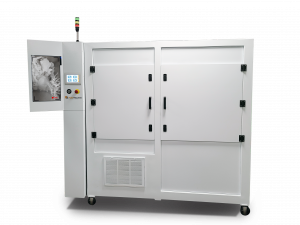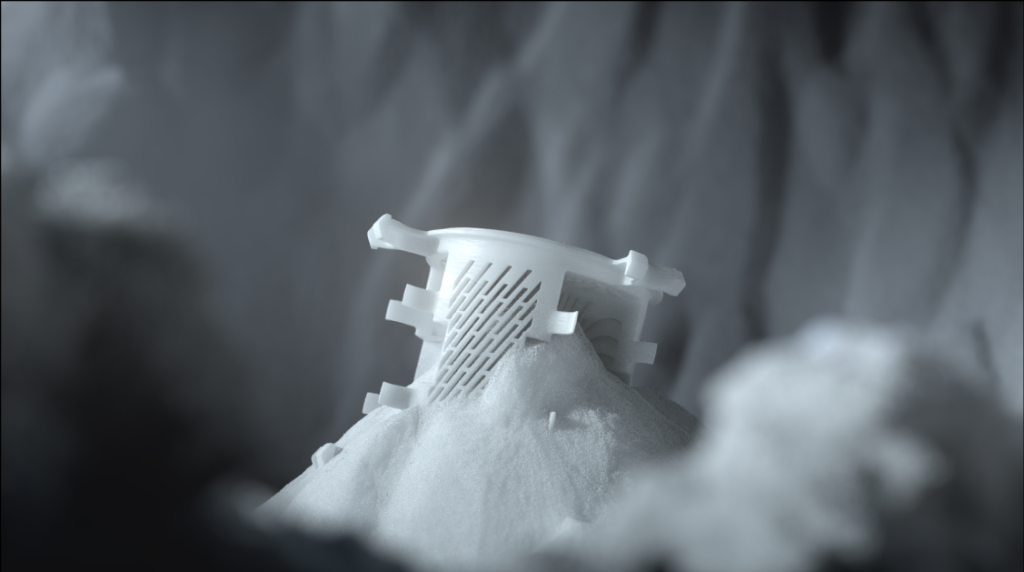
PostProcess and EOS announce a strategic partnership to support more sustainable automation
PostProcess claims that VAD technology is working well with large industrial customers. It has processed hundreds of SLS powder cakes as well as thousands of parts in production environments.
PostProcess is an American-based global provider in intelligent post-printing technologies for additive manufacturing. EOS is a German-based provider of industrial 3D printing solutions. The companies announced a collaboration to provide EOS customers with an automated and sustainable depowdering solution. With the PostProcess Variable Acoustic Displacement™ (VAD) technology, 3D printed parts’ gross depowdering is automated, completing the EOS printer product line. This agreement will make it easier for consumers to purchase post-printing products. It also allows the workflow to be completely digitalized, from part design to 3D printing and post processing. PostProcess believes that in some cases, safety and sustainability issues may arise from the manual or semi-automated nature current methods of powder removal. PostProcess’ VAD system releases, transfers, and recovers loose powder particles while being thermodynamically regulated using video and infrared monitoring – according to PostProcess.
“We are proud to solidify this partnership with EOS, a global leader in industrial 3D printing, to help end users more easily adopt the complete workflow of additive manufacturing and scale their operations,” said Jeff Mize, PostProcess CEO. “EOS stands behind their sustainability objectives and shares in our dedication to ensuring additive manufacturing scales sustainably.”
“This partnership with PostProcess provides a digital connection that enables traceability and connectivity. We found the perfect match with PostProcess in providing our customers with sustainable automated post-processing for their delicate and complex parts manufactured using the EOS P 500,” said Nikolai Zaepernick, Chief Business Officer at EOS.
PostProcess Variable Acoustic Displacement™ (VAD) technology
The VAD technology uses PostProcess’s exclusive AUTOMAT3D® software platform to thermodynamically control the depowdering process. Software-tuned frequency can recognize geometries. Sound (pressure) waves can also be used to mechanically de-cake the powder without causing damage. These functions can be automatically tracked and modified in realtime in a closed loop solution that reuses powder.
A customer in Europe had previously received the first Variable Audio Displacement (VAD), powder removal system that PostProcess Technologies had ever produced. The fifth technology family of PostProcess Technologies, VAD, was introduced in October 2020. The patent protection for the method is pending. It was developed specifically to depowder parts made by multi-jet fusion and selective lasersintering (SLS). Unidentified consumer brand sought the technology to increase its SLS 3D printing workflow’s data connectivity in order to make it more reliable and scalable. After extensive customer validation, PostProcess decided to launch the product globally after the shipment.

Sustainable depowdering/post-processing solutions
Manufacturers need to manage powder behavior in order to optimize Selective Laser Sintering’s (3D printing process).
Both small businesses as well as large-scale manufacturers can increase the Return on Investment (ROI), and lower their overall costs by reducing powder refresh rate. Even though large industrial SLS3D printers often include dedicated powder handling stations, not all users need such heavy machinery.
Polish printer manufacturer Sinterit has launched its own powder-optimizing solutions. The firm’s powder toolset promises to speed up the printing preparation process for its customers, and its ATEX vacuum cleaner is made with comfort and safety in mind.
Digital Metal, a Swedish 3D printer manufacturer, introduced an automated depowdering station to binder jet systems. Digital Metal’s DPS 1000 is the latest machine. It automates post-print dust recycling and makes it easier to make binder jetted parts in a series. Fraunhofer IAPT was one of the first to adopt the new system. It will be used to promote its larger research into 3D printing that is material efficient and industrialization.
Solukon Maschinenbau, a manufacturer and distributor of post-processing equipment, unveiled its automated de-powdering system for polymer parts made using SLS systems. According to Andreas Hartmann, Technical Director and Co-Founder of Solukon, the Solukon SFP770 system is an “automated solution for industrial processing of powder-based AM parts.” The Solukon SFP770 was demonstrated at the Formnext Connect online event in November 2020. Launcher, a private US aerospace company, had chosen Solukon to be its trusted supplier of powder removal systems. For the post-processing of large 3D printed rocket parts, such as engines and combustion chambers, Launcher had integrated Solukon’s SFM-AT1000-S depowdering machine.
To stay up to date with the latest 3D printing news, don’t forget to subscribe to the 3D Printing Industry Newsletter Follow us on TwitterYou can also like our page Facebook.
While you’re here, why not subscribe to our Youtube channel? Featuring discussion, debriefs, video shorts, and webinar replays.
Are you looking for work in the additive manufacturing sector? For a list of available roles in the industry, visit 3D Printing Jobs


